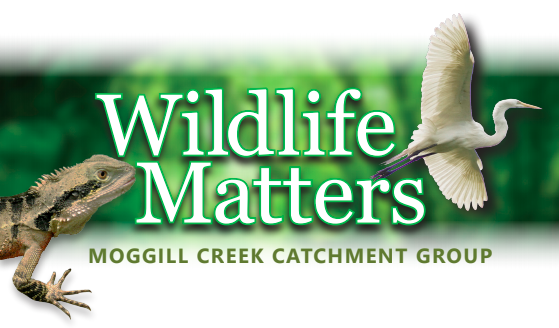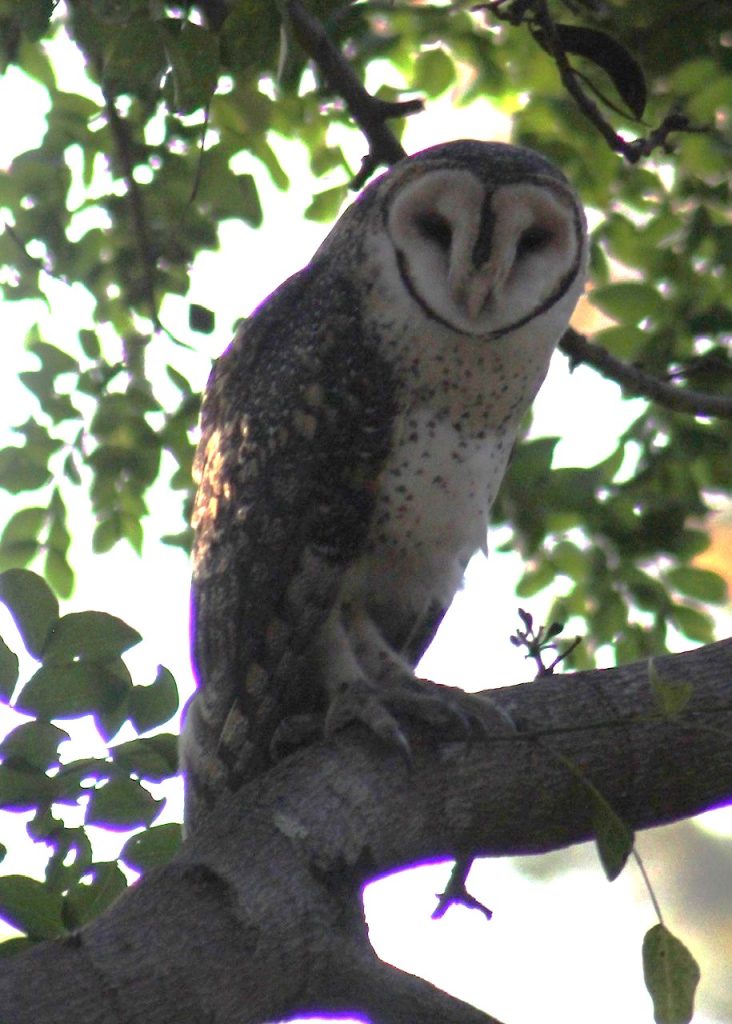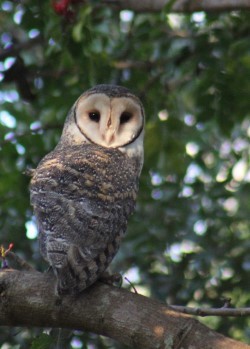
The Masked Owl – an enigmatic and mysterious nocturnal bird
The photos below of a Masked Owl taken by Moggill Creek Catchment Group (MCCG) committee member Chris Bruton on his property near Gap Creek. The Masked Owl (Tyto novaehollandieae), is distinguished from its relative, the Barn Owl, by its dark-ringed facial disc markings, white spots on checkerboard-dark wings, dark spots on a pale chest, and very large, apparently oversized talons. This was a very exciting observation, as these birds are not often seen, and very seldom as clearly and distinctively as this. Quite by chance, another acquaintance showed me a picture of another individual of this species beside a bikeway near Jindalee Bridge a few days later. This bird had all the same features, but with somewhat darker plumage.
The general impression of a Masked Owl is of a large dark owl with a knowing and somewhat unnerving gaze, often flying off silently and unexpectedly. One comes away with a notion of a formidable, shadowy, and silent bird of prey. In fact, Masked Owls are our second-largest nocturnal bird (the largest being the Powerful Owl). They have several plumage forms, some of which are dark rufous below, with other forms being much lighter-coloured (which Chris’s bird appeared to be).
Masked Owls have a distinctive call, rather like a set of rasping, far-carrying (and even more unnerving) screams, and often are quick to fly on disturbance, usually after being seen from a distance in a spotlight beam. Sometimes the call alerts one to their presence, but mostly they appear to be difficult to find. Like most other owls, they have a very bright greenish eye-shine, demonstrating their powerful ability to find prey in poor light. Their large rounded to heart-shaped facial disc acts as a “radar-dish” to concentrate sound that these animals also use to hunt by.
Their very large talons point to their primary food source: rats and other small mammals, usually taken on the ground. In southern Australia, rabbits are often caught. For this reason, Masked Owl habitat often seems to be a combination of both well wooded open forests with tall trees, and open grassy unwooded areas of either cleared land or heath. It is along these boundaries that these owls wait for prey, with the excellent view of the ground that is afforded in such locations. The related and relatively abundant Barn Owl tends to be found in more open habitats, often grassy areas within farmland and croplands.
Atlas of Living Australia records suggest that this species is more often observed between September and January, and very seldom recorded in other parts of the year. However, even in known locations, they are only irregularly observed.
An interesting and engaging account of Masked Owls in Australia can be found in “Birds of the Night: Owls, Frogmouth and Nightjars of Australia” by Dr David Hollands, published by Reed Books in 1991. I was lucky enough to meet David, an engaging ornithologist and country doctor, who just happened to live in the same town in Victorias’ East Gippsland where I was working at the time.
Sandy Pollock


Masked Owl Photos: Chris Bruton
Wildlife Matters is published in: 

